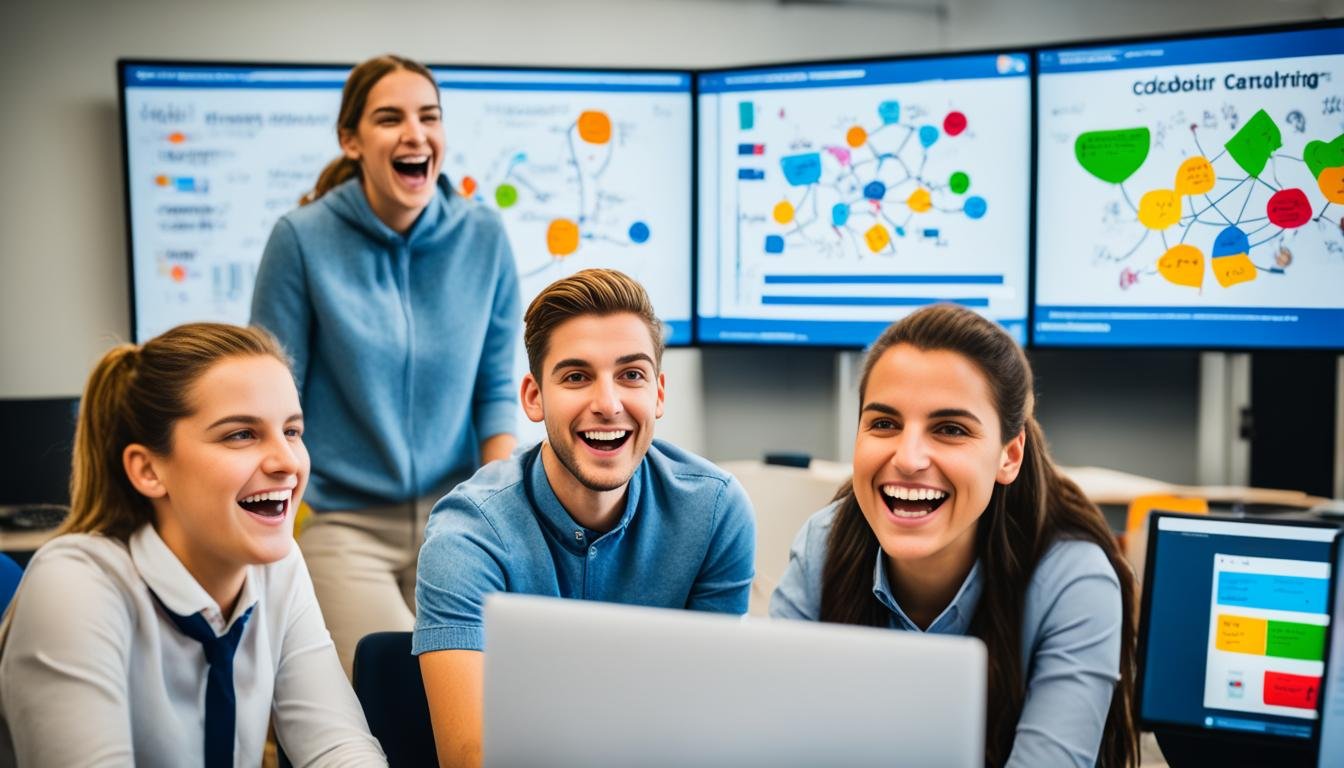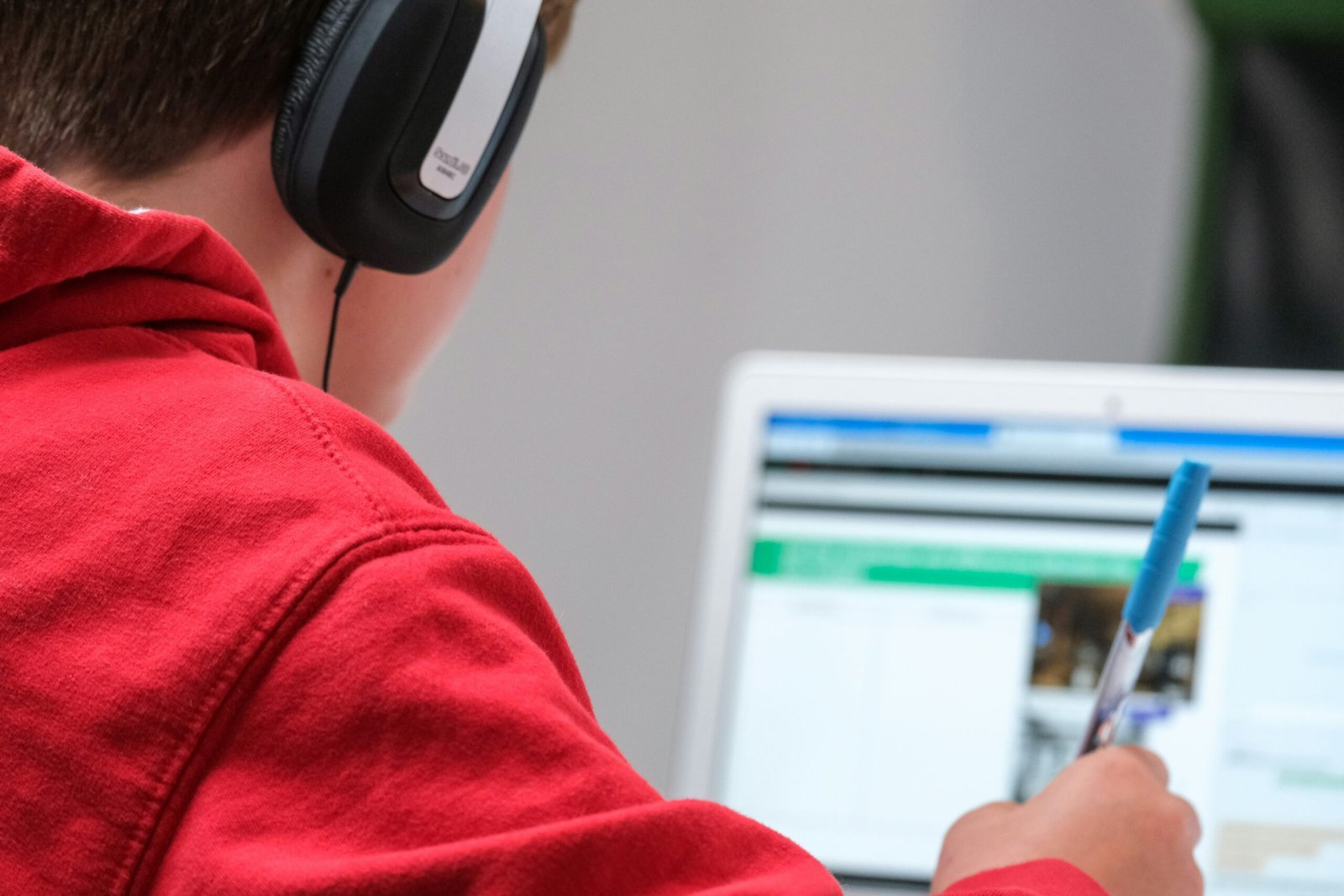Virtual classrooms have revolutionized the way we learn by providing dynamic and interactive online platforms for education. With the rapid advancement of technology, online learning, or e-learning, has become increasingly popular and accessible to individuals of all ages and backgrounds.
In virtual classrooms, students have the opportunity to engage in educational activities through web-based platforms, breaking free from traditional brick-and-mortar constraints. The flexibility offered by online learning allows individuals to learn at their own pace, fitting their studies into their busy schedules.
One of the key advantages of virtual classrooms is the accessibility of education. Through online platforms, students can access learning materials from anywhere in the world, eliminating geographical barriers. Additionally, virtual classrooms offer a wide range of multimedia resources, including videos, interactive quizzes, and forums, enhancing the learning experience and catering to different learning styles.
In this article, we will explore the various aspects of virtual classrooms and delve into the future of education shaped by web-based platforms. We will discuss the dynamic e-learning experiences within virtual classrooms and the skills required to succeed in remote education. Furthermore, we will examine the role of virtual teaching and the tools utilized to create digital classrooms. Finally, we will explore how virtual classrooms are utilized for professional development and training purposes.
Join us on this fascinating journey as we uncover the many benefits and opportunities that virtual classrooms bring to the world of online learning.
The Future of Education: Virtual Classrooms
The world of education is rapidly evolving, and virtual classrooms are at the forefront of this transformative shift. With the rise of remote education and web-based learning, virtual classrooms offer opportunities that go beyond the limitations of traditional brick-and-mortar settings.
Remote education powered by virtual classrooms enables students from all over the world to access quality education from the comfort of their own homes. Geographic boundaries are no longer a barrier as learners can connect with educators and peers seamlessly. This accessibility opens up a world of possibilities for those who may have been previously excluded from educational opportunities.
“Virtual classrooms have the potential to revolutionize the way we learn. They provide a dynamic, interactive, and engaging environment for students to thrive in,” says Dr. Sarah Adams, an expert in web-based education and professor at Virtual University.
Web-based education allows for a flexible and personalized learning experience. Students can access a wide range of resources, including videos, interactive quizzes, and multimedia presentations, that cater to different learning styles. The virtual classroom environment fosters collaboration, critical thinking, and problem-solving skills, cultivating well-rounded individuals prepared for the future.
Furthermore, virtual classrooms support lifelong learning. Professionals looking to upskill or reskill can take advantage of web-based education to enhance their knowledge and competencies. The convenience of online platforms allows individuals to balance their learning with their work and personal commitments.

As we embrace the future of education, virtual classrooms provide a pathway to innovative and inclusive learning experiences. The possibilities are endless, and the impact on individuals, communities, and societies as a whole is immeasurable.
Dynamic E-Learning Experiences
E-learning has revolutionized education, providing students with the opportunity to engage in virtual classrooms and access a wealth of online learning resources. These virtual classrooms offer dynamic and interactive experiences that enhance the learning process and cater to individual learning needs.
One of the key advantages of virtual classrooms is the availability of interactive features. Through real-time communication tools like chat and video conferencing, students can actively participate in discussions and collaborate with their peers, creating a sense of community and fostering engagement.
Furthermore, virtual classrooms often incorporate multimedia resources such as videos, animations, and interactive quizzes, making the learning experience more captivating and immersive. This multimedia approach caters to different learning styles, allowing students to grasp concepts effectively and retain information better.
Enhancing Engagement through Gamification
Gamification is another powerful tool used in virtual classrooms to boost engagement and motivation. By integrating game-like elements such as badges, leaderboards, and rewards, educators can create a gamified learning experience that incentivizes student participation and encourages healthy competition.
Gamification not only makes learning fun but also promotes active learning, problem-solving, and critical thinking skills. Students are more likely to stay motivated and invested in their education when they can see their progress, achievements, and compare their performance with their peers.
“Gamification adds an element of excitement and challenge to the learning process, making it more enjoyable and memorable for students.”
Effective Assessment Strategies
Virtual classrooms also offer various assessment strategies that allow educators to track student progress and evaluate learning outcomes. Online quizzes, assignments, and interactive simulations can provide immediate feedback, allowing students to understand their strengths and areas for improvement.
This timely feedback and personalized assessment enable students to take ownership of their learning and make necessary adjustments to their study habits or approach to the subject matter. Additionally, virtual classrooms offer the flexibility to review lessons and access supplementary materials, ensuring a comprehensive understanding of the topics covered.
| Advantages of Dynamic E-Learning Experiences in Virtual Classrooms | Examples |
|---|---|
| Increased engagement and participation | Real-time chat discussions |
| Enhanced retention and understanding | Multimedia resources (videos, animations) |
| Foster critical thinking and problem-solving skills | Gamification elements (badges, leaderboards) |
| Immediate feedback and personalized assessment | Online quizzes and assignments |
Overall, the dynamic nature of e-learning experiences in virtual classrooms offers endless possibilities for personalized and engaging education. Students can explore and absorb knowledge at their own pace, leveraging interactive features, multimedia resources, and gamification elements to enhance their learning journey.
Mastering Remote Education Online
In today’s rapidly evolving educational landscape, virtual classrooms have emerged as a powerful platform for remote education and distance learning. With the advent of advanced technology and digital tools, students now have the opportunity to master their education from anywhere in the world, at any time.
One of the key advantages of virtual classrooms is the flexibility it offers. Whether you’re a working professional seeking to advance your career or a student with other commitments, the convenience of accessing educational resources remotely allows you to tailor your learning experience to fit your schedule.
However, to succeed in this virtual environment, self-discipline and effective time management are critical. With the absence of a traditional classroom setting, it’s important to establish a routine and create a conducive learning environment. The ability to structure your time and stay focused will ensure maximum productivity and engagement within virtual classrooms.
Furthermore, virtual classrooms provide an array of interactive tools and resources that enhance the learning experience. From multimedia presentations and virtual simulations to collaborative discussions and real-time feedback, remote education offers a dynamic and engaging learning environment that fosters interactivity and critical thinking.
“Virtual classrooms provide students with the flexibility to learn at their own pace, while still receiving the guidance and support needed for their educational journey.”
In addition, virtual classrooms offer personalized learning experiences through adaptive technologies. By leveraging data analytics and machine learning algorithms, educators can assess individual learning needs and tailor instruction accordingly. This personalized approach not only improves student outcomes but also empowers learners to take ownership of their education.

| Advantages of Mastering Remote Education Online | Challenges of Mastering Remote Education Online |
|---|---|
|
|
Mastering remote education through virtual classrooms not only opens up a world of opportunities for learners but also prepares them for the digital age. By developing key skills such as self-discipline, time management, and adaptability, students are equipped with the tools they need to thrive in an increasingly interconnected and technology-driven society.
Virtual Teaching and Digital Classrooms
As virtual classrooms continue to gain momentum in the world of education, virtual teaching has emerged as a pivotal component in ensuring effective online learning experiences. In this section, we will explore the role of virtual teaching and the tools and technologies involved in creating digital classrooms.
Virtual teaching refers to the act of instructing and engaging students in an online setting. Educators harness various digital resources and platforms to deliver lessons, facilitate discussions, and provide feedback. Through virtual teaching, educators can transcend physical limitations and cater to a global audience of learners.
One of the key elements in digital classrooms is the utilization of technology-enabled teaching tools. These tools enable educators to deliver interactive and engaging lessons, fostering active participation and knowledge retention. For instance, video conferencing platforms allow educators to conduct live lectures, host virtual discussions, and provide real-time feedback to students.
By leveraging virtual classrooms, educators can recreate the collaborative and interactive environment of traditional classrooms in a digital space. This not only enables students to learn from the comfort of their homes but also promotes active learning and fosters a sense of community among learners.
Additionally, digital classrooms offer a wide range of multimedia resources, such as educational videos, interactive presentations, and online simulations. These resources enhance the learning experience by catering to diverse learning styles and providing visual and interactive elements that aid in comprehension and engagement.
Adapting to virtual teaching comes with its own set of challenges. Educators must strive to create a structured and conducive online learning environment, ensuring that students stay motivated and actively participate in the virtual classroom. Implementing strategies like clear communication, regular feedback, and collaborative activities can help overcome these challenges and foster meaningful learning experiences.
Moreover, it is crucial for educators to stay updated with the latest trends and advancements in virtual teaching and digital classrooms. This includes familiarizing themselves with new tools and technologies, exploring innovative teaching methods, and staying informed about best practices in online education.
Overall, virtual teaching and digital classrooms play a significant role in revolutionizing modern education, offering flexibility, accessibility, and transformative learning experiences for students.
Advantages of Virtual Teaching and Digital Classrooms
| Advantages | Description |
|---|---|
| Flexibility | Students can access learning materials and participate in classes at their own pace and convenience. |
| Global Reach | Virtual teaching allows educators to reach learners from around the world, transcending geographical barriers. |
| Interactive Learning | Digital classrooms offer a range of multimedia resources and interactive tools to enhance engagement and comprehension. |
| Personalized Attention | Virtual teaching enables educators to provide individualized feedback and support to students. |
| Increased Accessibility | Students with physical disabilities or other limitations can easily access and participate in online learning. |
As the education landscape continues to evolve, it is essential for educators to embrace virtual teaching and leverage the power of digital classrooms to unlock the full potential of online learning.
Virtual Training for Professional Development
In today’s rapidly evolving professional landscape, virtual classrooms have become invaluable for professional development and training. Organizations of all sizes are harnessing the power of virtual training programs to equip their employees with the necessary skills and knowledge needed to thrive in a digital world.
Advantages of Virtual Training Programs
Virtual training offers numerous advantages over traditional in-person training methods. One of the key benefits is the cost-effectiveness of virtual classrooms. Without the need for physical infrastructure, travel expenses, or accommodation costs, organizations can significantly reduce their training expenses while still providing top-notch learning experiences.
Furthermore, virtual training allows for greater scalability and reach. With just a computer and an internet connection, participants from different geographic locations can access the same training materials simultaneously. This opens up opportunities for organizations to train a larger audience without sacrificing quality or personal interaction.
Virtual training programs also offer flexibility and convenience, allowing participants to learn at their own pace and schedule. This flexibility eliminates the constraints of traditional training schedules and allows individuals to balance their work and personal commitments more effectively.
Enhancing Engagement and Interactivity
Effective virtual training programs incorporate various interactive features to enhance engagement and promote active learning. Interactive quizzes, virtual simulations, and collaborative group activities ensure participants remain involved and attentive throughout the training process.
To foster peer-to-peer learning and networking, virtual training programs often encourage participants to form online communities or discussion groups. These platforms provide a space for participants to exchange ideas, ask questions, and share insights, fostering a sense of camaraderie and collaboration.
Sample Table: Virtual Training Tools Comparison
| Virtual Training Tool | Features | Cost |
|---|---|---|
| Tool A | Interactive quizzes, virtual whiteboards, real-time collaboration | Free for basic features, premium plans available |
| Tool B | Virtual simulations, breakout rooms, analytics dashboard | Subscription-based pricing |
| Tool C | Live video conferencing, document sharing, screen sharing | Pay-as-you-go pricing |
Conclusion
In conclusion, virtual classrooms have revolutionized the field of education by providing a flexible and accessible platform for online learning. Throughout this article, we have explored the benefits and potential of e-learning in virtual classrooms, highlighting the opportunities for remote education, web-based learning, and professional development.
Virtual classrooms offer dynamic e-learning experiences, incorporating interactive features and multimedia resources to engage students and enhance the learning process. The ability to learn from anywhere, at any time, has opened up new possibilities for individuals seeking to master remote education.
As we move forward, continuous adaptation and innovation will be key to maximizing the potential of virtual classrooms. Educators must embrace virtual teaching and digital classrooms, leveraging the tools and technologies available to create engaging learning environments. The growth and importance of virtual classrooms in the field of education cannot be underestimated, and the need for online learning and e-learning will only continue to expand.




